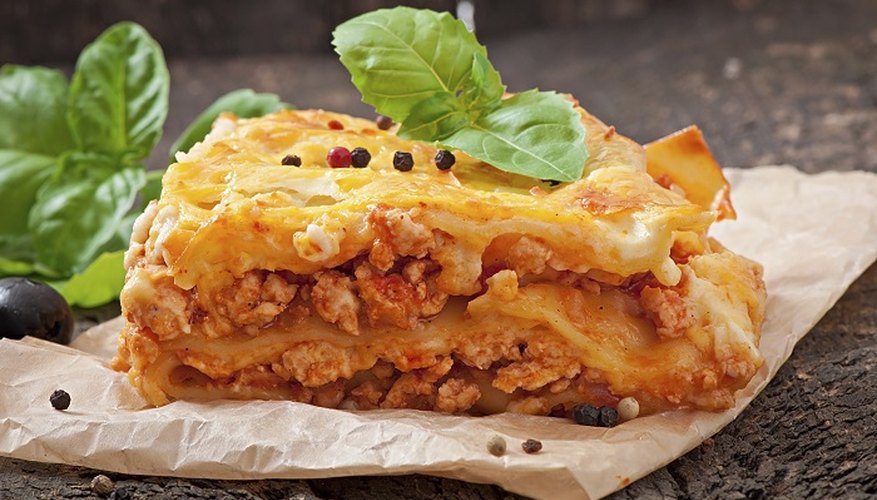Some dishes are naturally made in large batches, which can be problematic for people who have small families or live alone. Often, the best choice is to freeze the leftovers after cooking. Lasagna is one of those dishes. Additionally, lasagna is often made for large gatherings and it's convenient to make the lasagna a few days ahead and freeze it. Then, all you have to do on the day of the dinner party is make a salad or appetiser and reheat the lasagna. But a frozen lasagna placed directly in the oven will burn around the edges and on the top before the inside is reheated.
Remove the lasagna from its freezer container and place it in a baking dish. If the lasagna sticks to the freezer container, fill a bowl or sink with hot water and place the freezer container into the water bath for five minutes. Do not submerge your container or allow the water to seep into the frozen lasagna.
- Some dishes are naturally made in large batches, which can be problematic for people who have small families or live alone.
- If the lasagna sticks to the freezer container, fill a bowl or sink with hot water and place the freezer container into the water bath for five minutes.
Cover the frozen lasagna and place it in the refrigerator overnight to defrost. You can defrost it up to two days in advance with no problems.
Preheat the oven to 160 degrees C (325F).
Create an aluminium foil tent over the lasagna and place it in the oven.
Bake the lasagna for 30 minutes or until the internal temperature reaches 71 degrees C (160F). Experts recommend using an instant-read thermometer.
TIP
If you forgot to defrost the lasagna the day before, bake it for 20 minutes at 220 degrees C (425F) and then lower the temperature. Continue baking for another hour to reach the appropriate internal temperature.
Instead of freezing the whole lasagna, cut it into squares and wrap the squares in aluminium foil before freezing.
